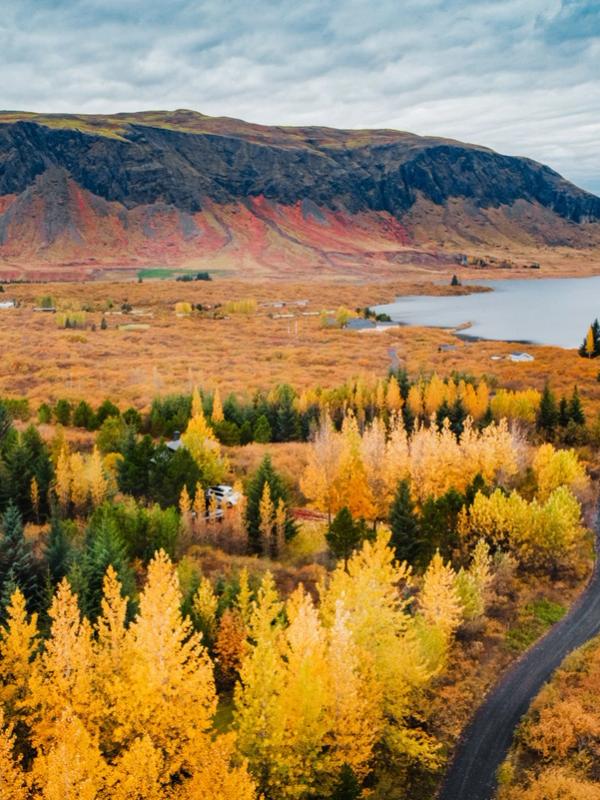
Most-visited Spots in Iceland in 2024 (And Options to Avoid the Crowds)
Iceland has some of the most incredible sights in the world, like waterfalls, black sand beaches, and geothermal hot spots. It’s easy to see why certain places are so popular, but that also means they can get pretty crowded. The good news? With a little planning, you can still enjoy these amazing spots or find quieter alternatives nearby.
In this guide, we’ll look at the nine most-visited places in Iceland in 2024 according to the data collected by the Icelandic government, including how many people went to each place and what makes them special. We’ll also suggest less busy spots that offer the same kind of beauty but with more space to enjoy. Whether you’re after great views or peaceful moments, this list will help you explore Iceland without the crowds.
making it great for short hikes or simply1. Gullfoss (1,575,152 visitors)
Gullfoss is one of Iceland’s most popular waterfalls and is easy to visit along the Golden Circle route in southwest Iceland. Its name, “Golden Falls,” comes from the golden glow you see when the sunlight hits the spray. The waterfall drops in two big steps along the Hvítá River, and the sound of all that water crashing down is incredible. There are wooden paths and platforms where you can get some great views, especially in the summer when the water is really strong.
If you have some extra time, there’s more to do in the area. You can take a snowmobile tour on Langjökull Glacier if you’re up for an adventure or soak in the Laugarvatn Fontana for something more relaxing. Most people also visit Geysir and Þingvellir National Park on the same day as part of a Golden Circle trip.
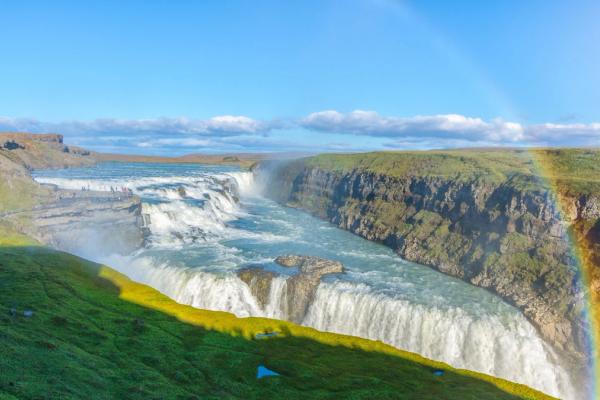
Alternative: Hraunfossar
If you want a quieter spot, Hraunfossar in western Iceland is a great pick. The waterfalls flow out from under a lava field and into the bright blue Hvítá River. It’s especially pretty in the fall when the trees around it turn shades of orange and yellow. You can walk along the paths to see up close how the water flows straight out of the lava rock.
Nearby, you’ll find Barnafoss, another pretty waterfall just a short walk away. It’s a nice place to have a picnic by the river or visit the Krauma Geothermal Baths to relax in hot water. Since Hraunfossar doesn’t get as many visitors as Gullfoss, it’s a peaceful spot to enjoy Iceland’s nature.
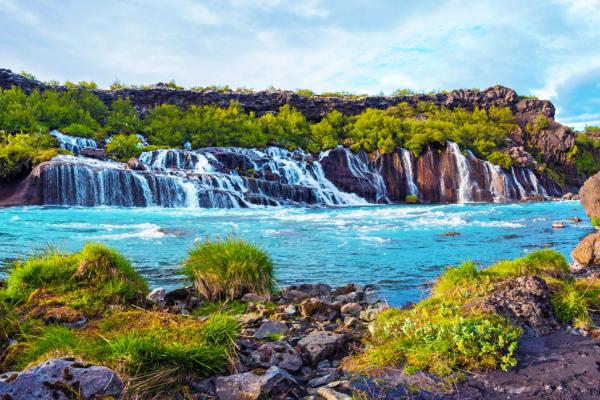
2. Geysir Geothermal Area (1,373,617 visitors)
The Geysir Geothermal Area is where the word “geyser” originally came from. Geysir itself doesn’t erupt much anymore, but Strokkur erupts every few minutes, sending water shooting up about 30 meters. The area is full of steaming vents, bubbling mud pools, and colorful soil, so there’s plenty to see while you wait for Strokkur to go off.
There’s a visitor center nearby where you can learn more about the area, and a café where you can grab some food. Many people visit this spot along with Gullfoss and Þingvellir to do the full Golden Circle. If you want to relax afterward, the Secret Lagoon in Flúðir is a great place to soak in some hot water.
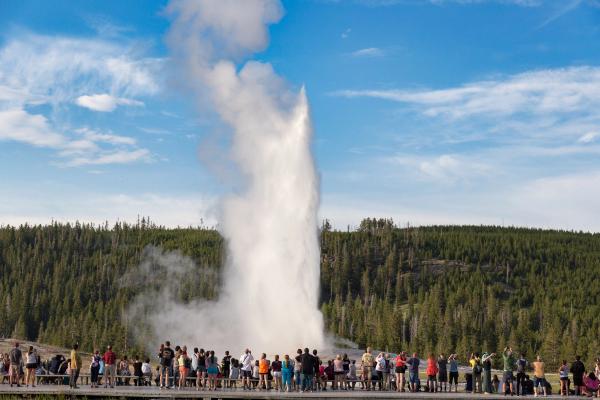
Alternative: Krýsuvík Geothermal Area
If you’re looking for a geothermal area that’s less crowded, Krýsuvík on the Reykjanes Peninsula is a great choice. It has steaming vents, bubbling mud, and colorful ground, just like Geysir, but without all the big crowds. Wooden paths take you close to the action, although you might notice the smell of sulfur in the air.
The Reykjanes Peninsula also has other cool spots to visit, like Lake Kleifarvatn, one of Iceland’s deepest lakes, surrounded by volcanic scenery. You can end your day with a meal at a local restaurant that serves fresh fish and other Icelandic dishes. Krýsuvík is a good pick if you want to enjoy Iceland’s geothermal wonders at a slower pace.
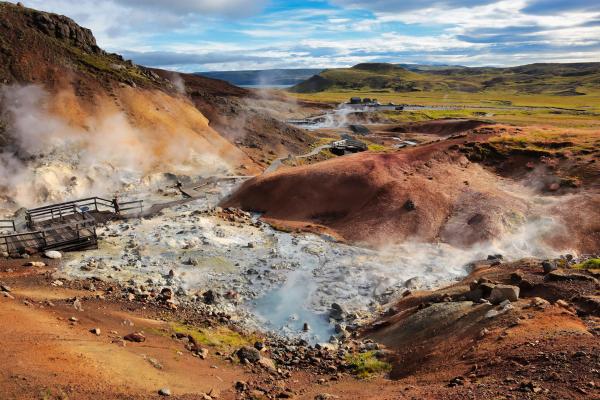
3. Þingvellir - Kárastaðastígur (675,558 visitors)
Þingvellir (say it like “Thingvellir”) is one of the three national parks in Iceland, and it's full of history and natural beauty. It’s where Iceland’s first parliament started in 930 AD, and it’s also where two tectonic plates—the North American and Eurasian—pull apart, creating cracks and gaps in the ground. Walking through Almannagjá Gorge is a great way to see this up close, and you’ll also get a nice view of Þingvallavatn, Iceland’s biggest natural lake.
For something fun and unique, try snorkeling or diving at the Silfra Fissure. The water is so clear it feels like you’re floating between continents. If you want to keep things simple, there are walking trails around the park to enjoy the views and learn about Iceland’s history. It’s easy to spend a day here with parking, a visitor center, and a café all nearby.
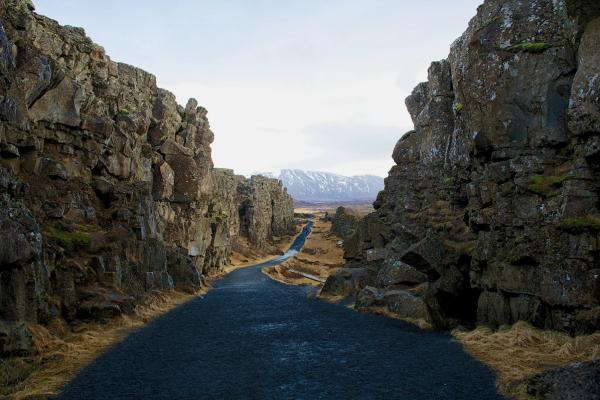
Alternative: Gjáin
Gjáin is like a hidden gem not too far from Þingvellir. It’s a small, peaceful valley with waterfalls, lava rocks, and mossy greenery that makes it feel like something out of a storybook. Streams and little waterfalls run through the area, and the only sounds you’ll probably hear are water trickling and birds singing.
While you’re there, check out the Stöng farm ruins, a Viking farm reconstruction that gives you a peek into Iceland’s past. Bring some food and enjoy a quiet picnic. Since Gjáin isn’t as busy as Þingvellir, it’s a great place for a calm and relaxing day.
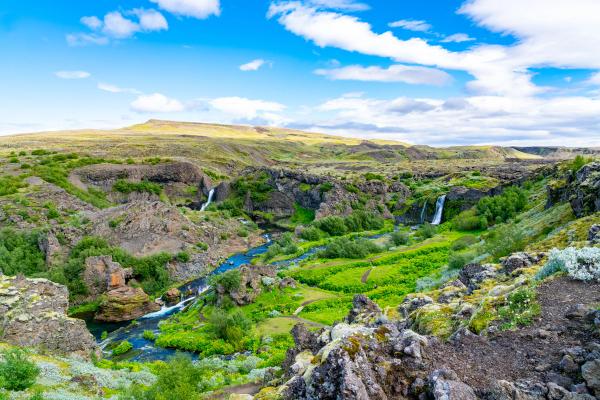
4. Reynisfjara (445,355 visitors)
Reynisfjara is Iceland’s most famous black sand beach. It’s on the south coast near Vík, and the mix of black sand, tall basalt columns, and the Reynisdrangar sea stacks makes it incredibly cool. It’s a dream spot for photos, but you must be careful—sneaker waves here can be dangerous, so stay back from the water.
After that, you can visit the nearby village of Vík for a warm drink or walk up to the red-roofed church for a great coastline view. This area is also a starting point for glacier hikes and tours to the Katla Ice Cave.
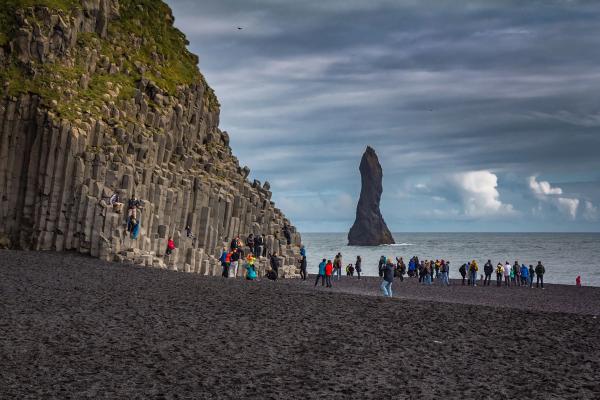
Alternative: Dyrhólaey Beach
Dyrhólaey is part of the same coastline as Reynisfjara, but it’s usually quieter. It also has the black sand, along with rock arches and cliffs that give you awesome ocean views. Head up to the lighthouse for a fantastic look at the area, and if you visit in summer, you might even see puffins nesting here.
A walk along the beach gives you a closer look at the basalt columns and waves crashing on the shore. There are also short hikes around the area that lead to hidden spots and small coves. Dyrhólaey is a great choice for the black-sand experience without all the crowds.
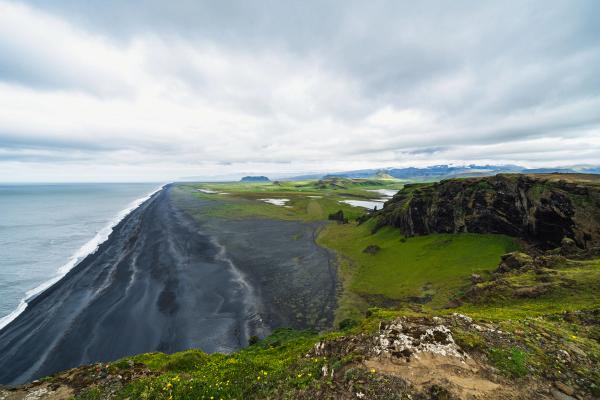
5. Fjaðrárgljúfur (383,627 visitors)
Fjaðrárgljúfur is a winding canyon in southeast Iceland that was shaped by the Fjaðrá River over a long time. Its steep walls are covered in green moss, giving it a mystical feel. The canyon is up to 100 meters tall, and there are easy trails that lead to safe spots for enjoying the views.
Take your time to enjoy the peaceful atmosphere, but stick to the marked paths to protect the moss. While you’re nearby, check out Kirkjubæjarklaustur, a little village with a cool basalt rock formation called Kirkjugólf, or “the Church Floor,” which looks like a stone tile floor.
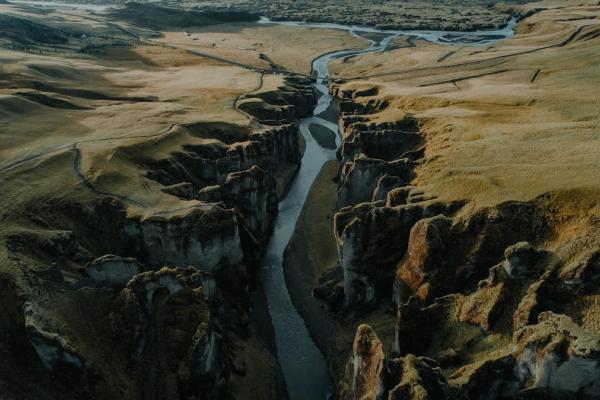
Alternative: Eldgjá Canyon
If you’re looking for something quieter, head to Eldgjá Canyon in Katla Geopark, the largest volcanic canyon in the world. Known as “Fire Canyon,” it was formed during a huge volcanic eruption over a thousand years ago. It’s much larger than Fjaðrárgljúfur, with tall cliffs and wide-open green views that feel untouched.
Don’t miss Ófærufoss, a beautiful waterfall hidden inside the canyon. The water flows into a rugged, mossy landscape that looks different from anything you’ve seen before. Eldgjá takes a little more effort to reach, but it’s worth it if you enjoy hiking or want to escape the crowds.

6. Goðafoss - Eastern side (288,430 visitors)
Goðafoss, or “Waterfall of the Gods,” is one of the most beautiful and unique waterfalls in Iceland, with its turquoise waters. It’s right along the Ring Road in North Iceland, so it’s an easy stop if you’re driving through. There’s a story that, in the year 1000, a leader threw his old pagan idols into the falls when Iceland switched to Christianity. The waterfall has a wide horseshoe shape, and on sunny days, you might even see a rainbow in the mist.
There are paths on both sides of the waterfall, being the eastern one the most popular. Make sure to explore both for the best views. If you’re staying in the area, Lake Mývatn is nearby and offers lots to see, like lava fields, geothermal caves, and nature baths where you can relax. Goðafoss is one of northern Iceland’s highlights.
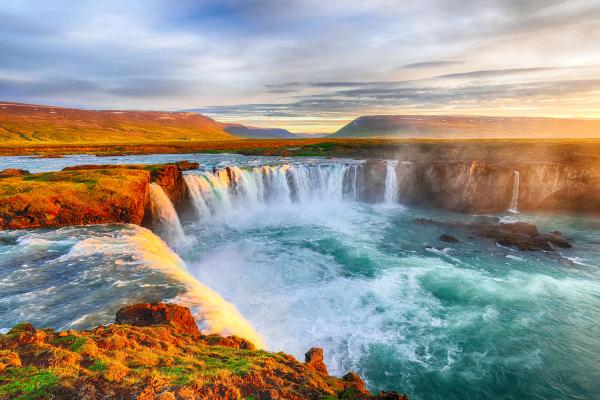
Alternative: Aldeyjarfoss
For something more remote, Aldeyjarfoss is a hidden gem in North Iceland. The waterfall crashes down through tall basalt columns, creating a striking mix of white water and dark rock. It’s harder to reach than Goðafoss, especially if the roads are rough, but the effort is worth it if you like exploring less crowded spots.
The area around the falls is rocky, so make sure to wear sturdy shoes if you want to get closer. Aldeyjarfoss feels more untouched and wild, so it’s a perfect pick for anyone who loves nature and doesn’t mind going off the usual tourist trail.
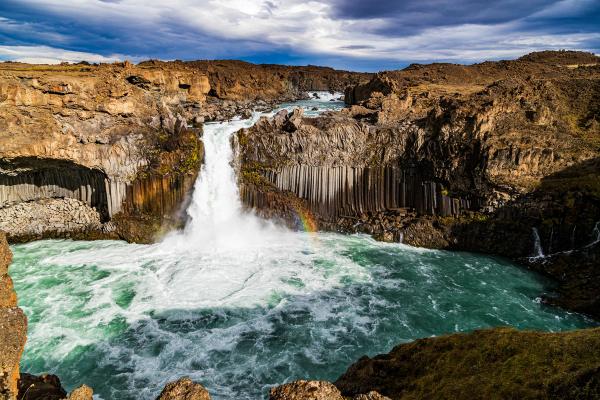
7. Dettifoss - Western side (236,738 visitors)
Dettifoss is the second most powerful waterfall in Europe, dropping 44 meters into the Jökulsárgljúfur canyon in North Iceland. You can hear the roar of the water well before you reach it, and standing near it, you really feel how strong the river is. The west side is easier to reach but can get very crowded during peak times.
If you want to see more of the area, there are trails nearby that lead to other waterfalls, such as Selfoss, which is upstream, and Hafragilsfoss, which is downstream. The whole area around Jökulsárgljúfur has a wild, rugged feel shaped by old floods and volcanic eruptions.
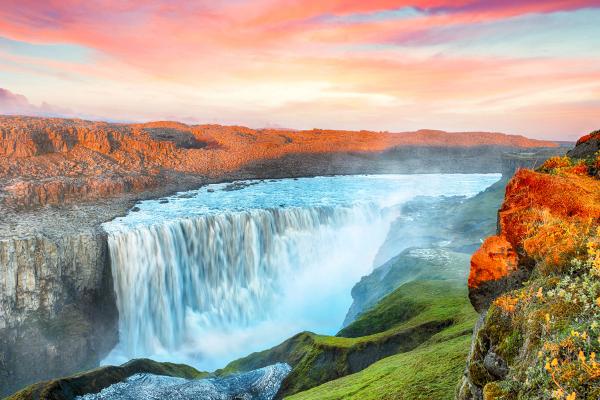
Alternative: Selfoss
Selfoss is just a short walk upstream from Dettifoss. It’s smaller, with water flowing over several rocky ledges, but it’s quiet and peaceful compared to its powerful neighbor. The glacial water has a milky color that’s quite calming.
The trail between Dettifoss and Selfoss is worth the extra time. Along the way, you'll see mossy ground and unusual lava rocks. While Selfoss doesn’t have the same power as Dettifoss, it offers a different kind of beauty: one that’s all about taking your time and enjoying the smaller details.
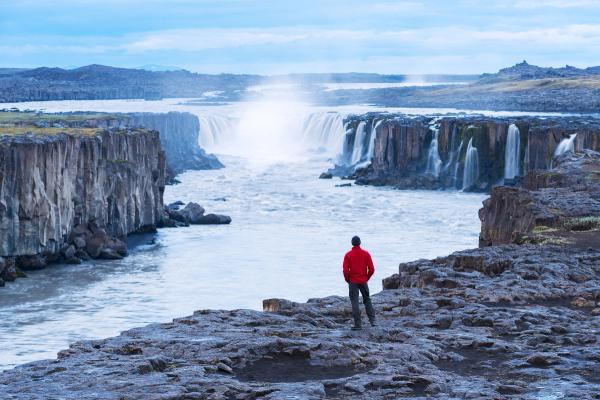
8. Súgandisey (203,021 visitors)
Súgandisey is a small peninsula in west Iceland connected to Stykkishólmur by a short causeway. There are steps leading to the top of the cliff, where you’ll find a small lighthouse and amazing views of Breiðafjörður Bay and the colorful harbor below. You’ll often spot seabirds flying by, and it’s a nice spot to take a break and enjoy the surroundings.
Stykkishólmur is a charming town with cozy cafés, small museums, and houses painted with bright colors. It’s a great place to grab some fresh seafood or a coffee. From here, you can also take a ferry to Flatey, a quiet island that’s even calmer. Súgandisey is a simple stop, but it’s perfect if you’re after a calm atmosphere and great views.

Alternative: Borgarfjörður Eystri Cliffs
Borgarfjörður Eystri in East Iceland has cliffs perfect for spotting puffins and seabirds. The area is surrounded by fjords, green hills, and colorful rhyolite mountains, which makes it great for short hikes or just enjoying the view.
After you’ve explored the cliffs, you can visit the tiny village nearby. There’s a small café where you can grab a snack and maybe talk to locals if you want to learn about the area’s folklore or hidden places to visit. It’s a quiet place with lots of character and stunning views without the usual crowds.
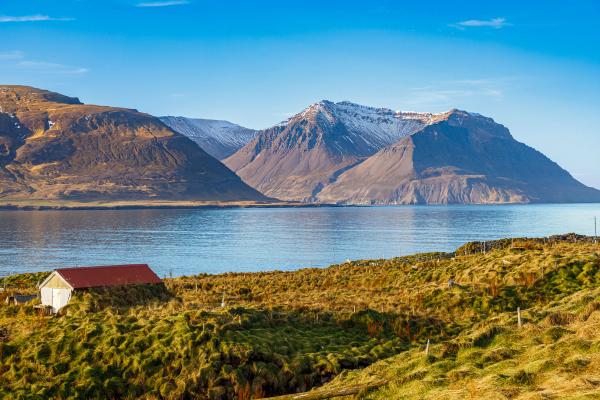
9. Skaftafell (190,100 visitors)
Skaftafell, part of Vatnajökull National Park, is a top spot for hiking and nature in southeast Iceland. The trails take you through green forests, past glaciers, and to Svartifoss, a waterfall surrounded by dark basalt columns. It’s perfect for both beginners and experienced hikers, with short and easy walks or longer hikes with glacier views.
After your hike, the visitor center is a good place to grab a snack, use the restroom, or get more info about the area. While you’re nearby, many people also visit Jökulsárlón glacier lagoon and Diamond Beach, where icebergs sit on the black sand. Skaftafell is a great mix of glaciers, waterfalls, and peaceful landscapes.
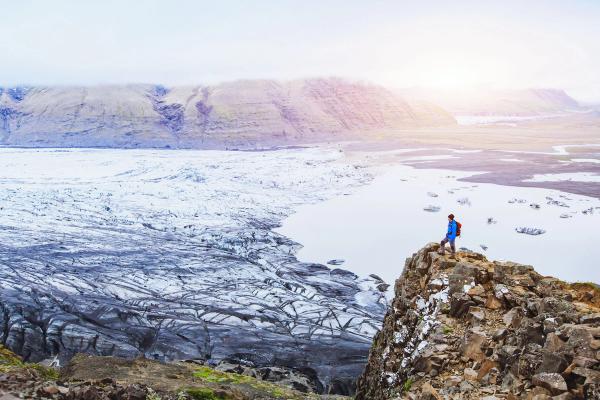
Alternative: Þakgil (Thakgil)
If you’re looking for a quieter place to hike near Vík, Þakgil is a hidden valley surrounded by tall green cliffs and mossy lava. The campground is very nice, with a cave where you can have meals if the weather isn’t great. This is a true hidden gem that most people don’t know about.
The trails here lead to amazing views of glaciers, waterfalls, and the rugged highlands. You can spend the day exploring or stay overnight during the summer when the midnight sun makes it easy to enjoy the scenery. Þakgil is perfect if you want a calm, less crowded spot to hike and enjoy Iceland’s landscapes.
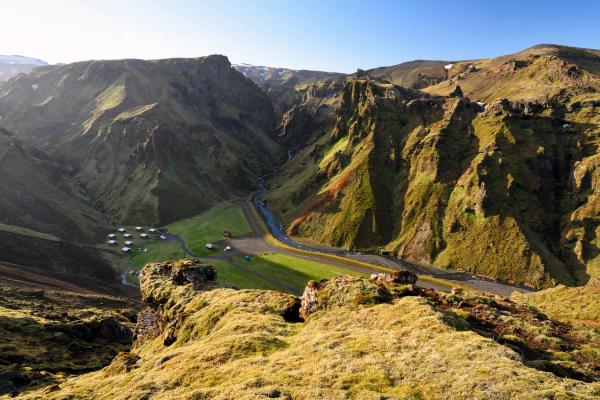
Conclusion
Iceland’s nine top spots definitely deserve their fame, but they can be busy. If you’re craving a calmer experience, try these alternative destinations. Not only will you avoid the crowds, but you’ll also discover hidden corners that are equally beautiful and even more unique.
